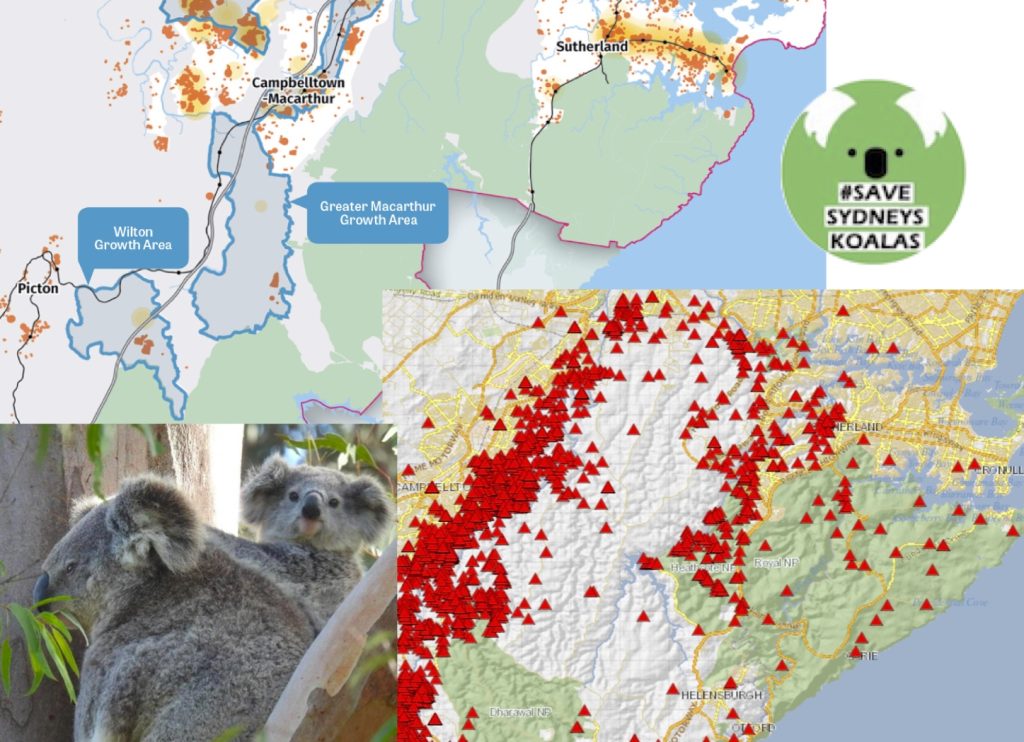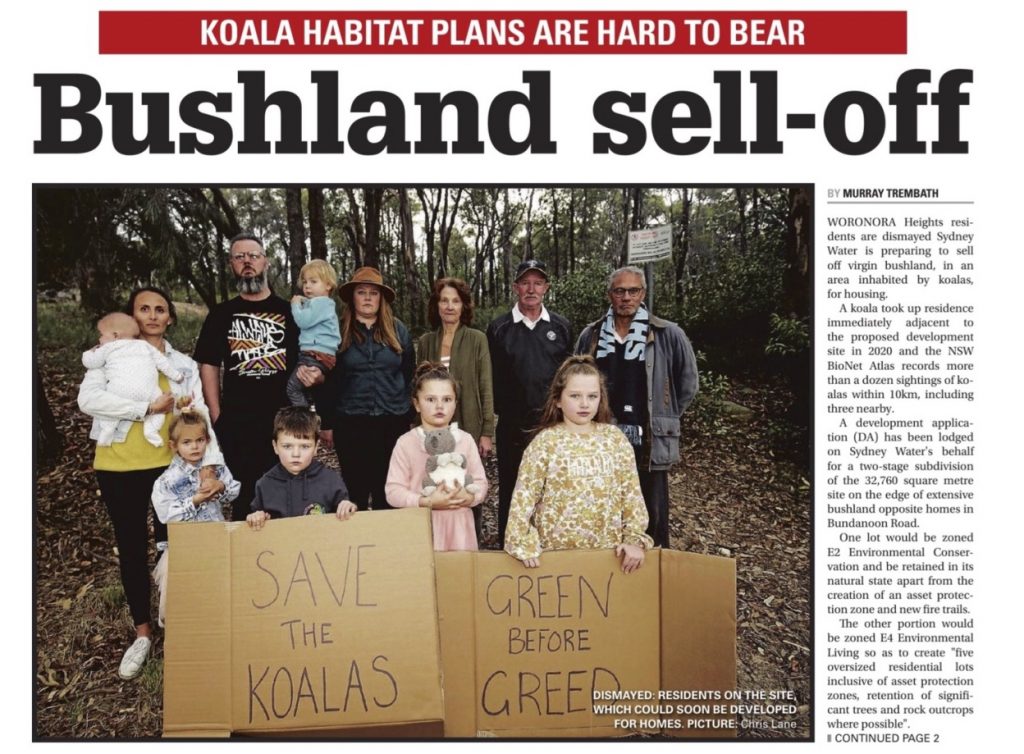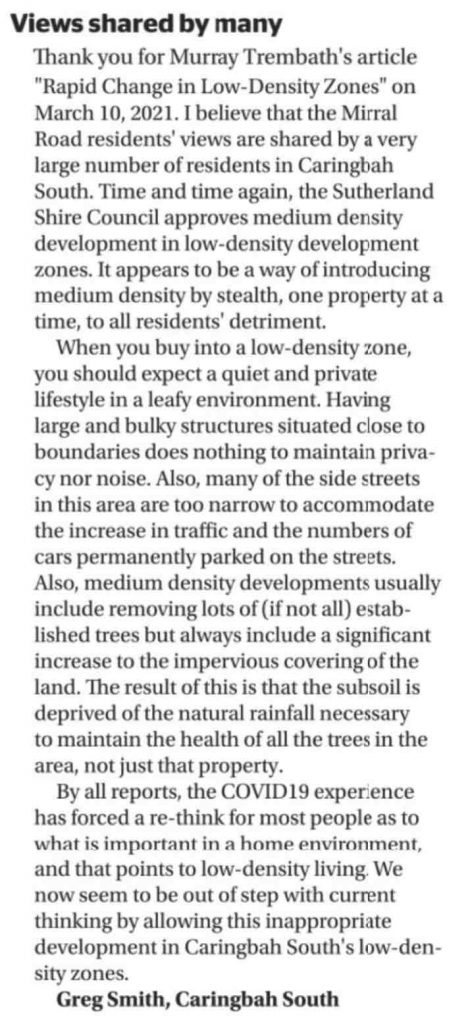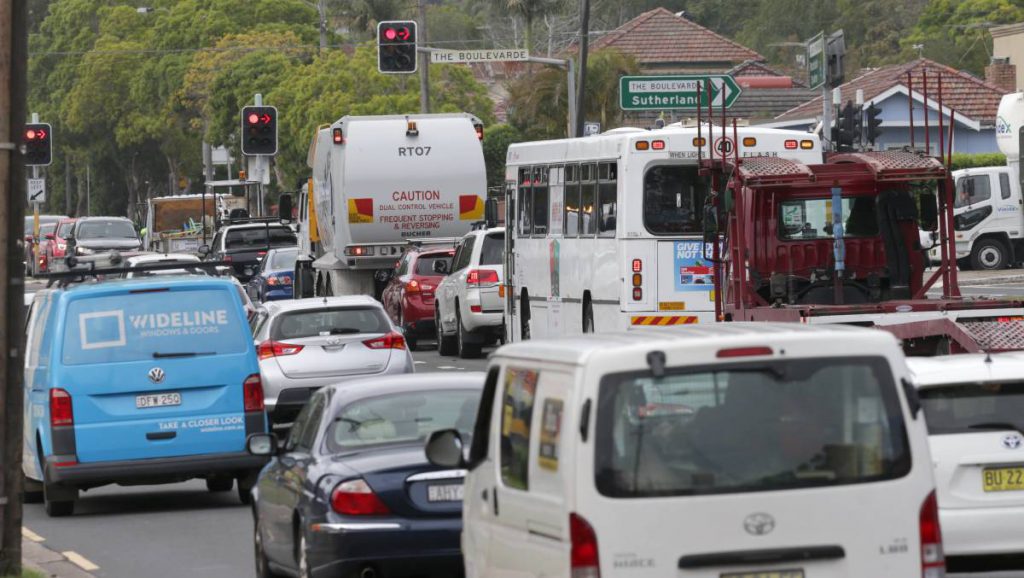
Australia’s population in mid-2020 was 25.7 million people. In 2000, it was 19.2 million. This increasing population is the driver for regular changes by the state government to the planning system, and results in changes which inevitably foster increasing density – high rise units, and low density “single” dwelling zones.
In 2018 a Council ‘Community Satisfaction’ Survey found the issues causing the most concern to residents are traffic congestion, overdevelopment and overcrowding: https://www.theleader.com.au/story/6207890/residents-love-shire-life-but-not-so-happy-with-council/

As with other parts of Sydney the character of the Shire has changed, and the population of Sutherland Shire is projected to increase to 258,000 by 2036. Demand for increased density in the Shire is taking place through the prism of government policies that attempt to accommodate population growth, and these State government planning decisions are being imposed on local Councils, which are required to adhere to new policies.
In August 2022, Sutherland Shire Council proposed a target of 22,000 new homes by 2036 to meet the requirements of the NSW Housing Strategy’s South District Plan.
Even now, no matter where you live, you don’t have far to look to see more high rise units, more townhouses, dual occupancies. The changes affect residents’ privacy, visual amenity, traffic, transport, air quality, tree canopy, and destroys bush and wildlife habitat. Sutherland Shire is fast losing the open space and tree cover that made it the envy of Sydney.
Meanwhile we have endangered species such as koalas on a 2050 extinction trajectory, and Sydney’s last healthy koala colony lies directly in the path of the Wilton and Greater Macarthur Growth Areas, facing obliteration.
Other local areas in the Shire are seeing important habitat threatened.
Sutherland Shire Environment Centre held a population forum in 2001, in conjunction with a group called Save our Suburbs. This was opened by the then Sutherland Shire Mayor, and attended by Labor and Liberal politicians, and various academics. It does not seem possible to have these same debates today.
The current planning hierarchy can be summarised as follows –
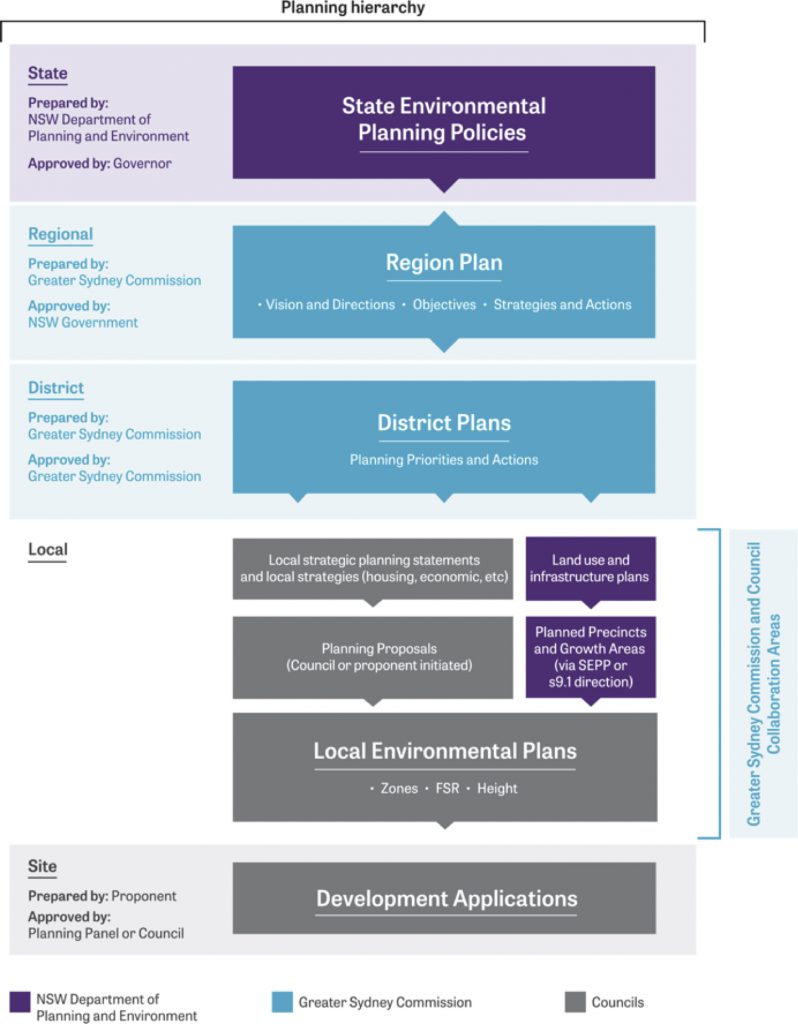
Sutherland Shire Council is now complying with the requirement to prepare a Local Strategic Planning Statement (LSPS) to set out a 20 year vision for how the local planning framework will respond to the priorities set out in the Community Strategic Plan and the South District Plan.
Council, under strict guidelines from the State Planning Department, prepares Local Environment Plans (LEPs) for Sutherland Shire. This is implemented through zoning and development controls, which provide a framework for the way land can be used.
LEPs are the main planning tool to shape the future of communities and also ensure local development is done appropriately.
Perhaps one of the most significant recent changes is that Sutherland Shire Councillors no longer determine larger development applications (DAs). Council’s role in this has been handed to the Sutherland Shire Local Planning Panel (SSLPP). Council staff still determine minor (less than $5m) and non-controversial DA’s as was previously the case.
The SSLPP was established under State Government legislation to provide an ‘independent’ hearing for applicants and objectors on contentious developments. Rather than democratically elected councillors making decisions about contested developments, such decisions are now made by around 3-4 SSLPP members. Council selects SSLPP members from a pool managed by the Department of Planning and Environment. The process around this selection is unclear, and members do not necessarily need to live in the Sutherland Shire. If a development is deemed “regionally significant” it bypasses the SSLPP, and is determined by the Sydney South Planning Panel (SSPP).
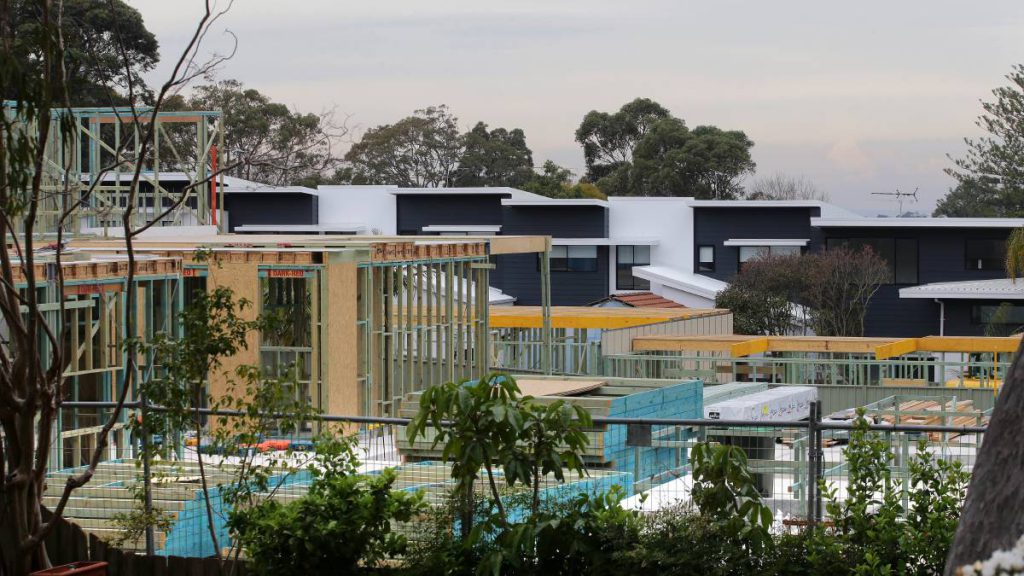
Council’s 2015 LEP can also be set aside if a development is deemed to have a ‘strategic merit’ which is consistent with State government planning policy – here the NSW Department of Planning can intercede directly in Council planning decisions – with developments proceeding to ‘Gateway’ Determination. In such cases the Planning Minister (or delegate) decides whether the planning / development proposal can proceed (with or without variation), and subject to other matters including further studies being undertaken, public consultation, and public hearings, etc.
The Minister’s ‘delegate’ making the decisions in such cases may be the Sydney South Planning Panel.
The two rules below are examples that demonstrate a bias in the planning system towards increasing development.
Types of proposed instruments that councils will be routinely authorised to make as a condition of the Gateway determination of a development application include:
- “LEPs which will result in a relaxation of a development standard on a site to promote development including potential increases to FSR and height of building controls and, reduced minimum lot sizes.”
However, a different rule applies if the LEP proposes downsizing.
- “Proposed instruments which would ‘down zone’ a parcel of land (i.e. reduce a site’s development potential) or which propose to introduce more restrictive development standards or controls will be considered on a case-by-case basis.”
Only seven councils in Sydney, including Sutherland, currently permit medium density development in low density residential zones. However Sutherland Shire Council has stated it ‘may seek to ban townhouse, villa and dual occupancy developments in R2 low density zones’ unless the shire is permanently exempted from a new state government housing code’.
As a justification for this exemption, in 2019 Council claimed it had met, and exceeded building targets set by the government.
Interestingly, in 2013 in response to the DLEP on exhibition, residents claimed that the council had greatly exceeded the State Planning Department’s mandated number of dwellings required. Council denied this at the time. Now, it appears the residents were right after all.
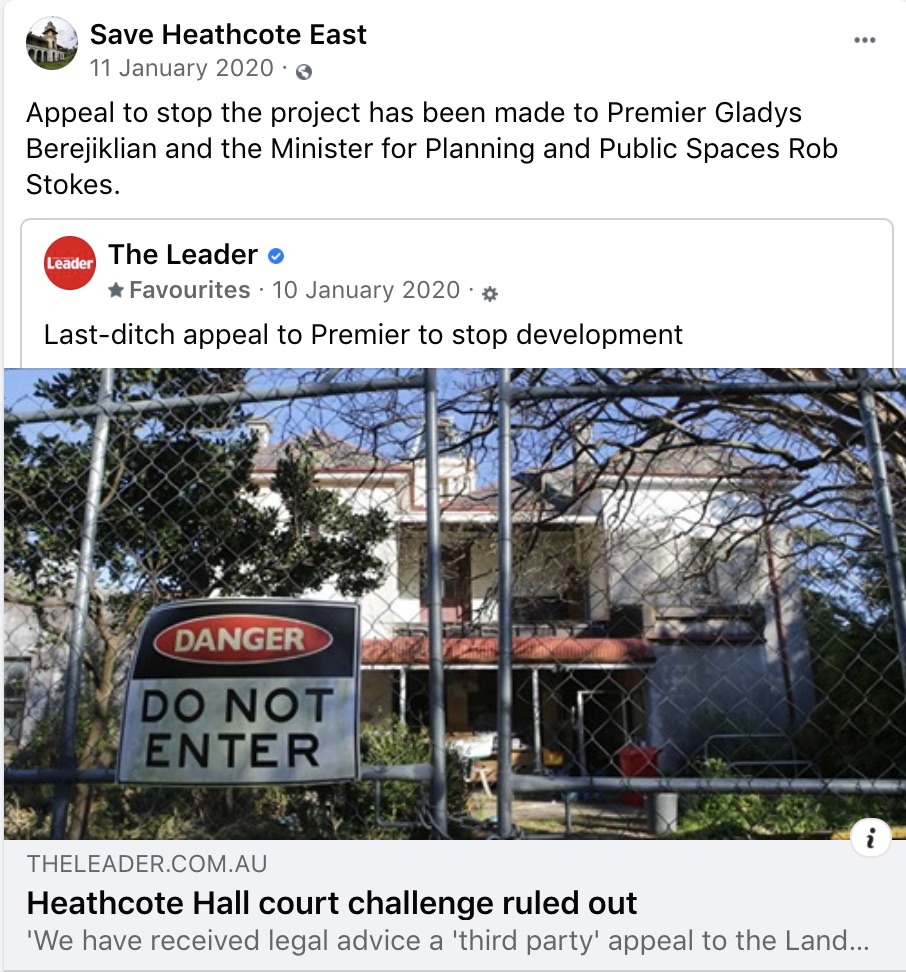
______________________
Save Our Shire believes this density is not consistent with the aspirations of most Shire residents.
If you’d like to get involved with this group, please contact: office@ssec.org.au
Convenors: Neil de Nett, Mark da Silva
Facebook: https://www.facebook.com/Save.Our.Shire/ and, https://www.facebook.com/SpringGullyProtectionGroup/
______________________
The Sutherland Shire 2015 LEP: http://www.sutherlandshire.nsw.gov.au/Development/Local-Environmental-Plan-LEP/Local-Environmental-Plan-2015-LEP-2015
The current Sutherland Shire DCP: http://www.sutherlandshire.nsw.gov.au/Development/Development-Control-Plans-DCP/Development-Control-Plan-2015
See also: https://www.planning.nsw.gov.au/Plans-for-Your-Area/Local-Planning-and-Zoning
And FAQs re Local Planning Panels: https://www.planning.nsw.gov.au/Assess-and-Regulate/Development-Assessment/Local-Planning-Panels/Frequently-asked-questions
______________________
See our other posts for more information:

